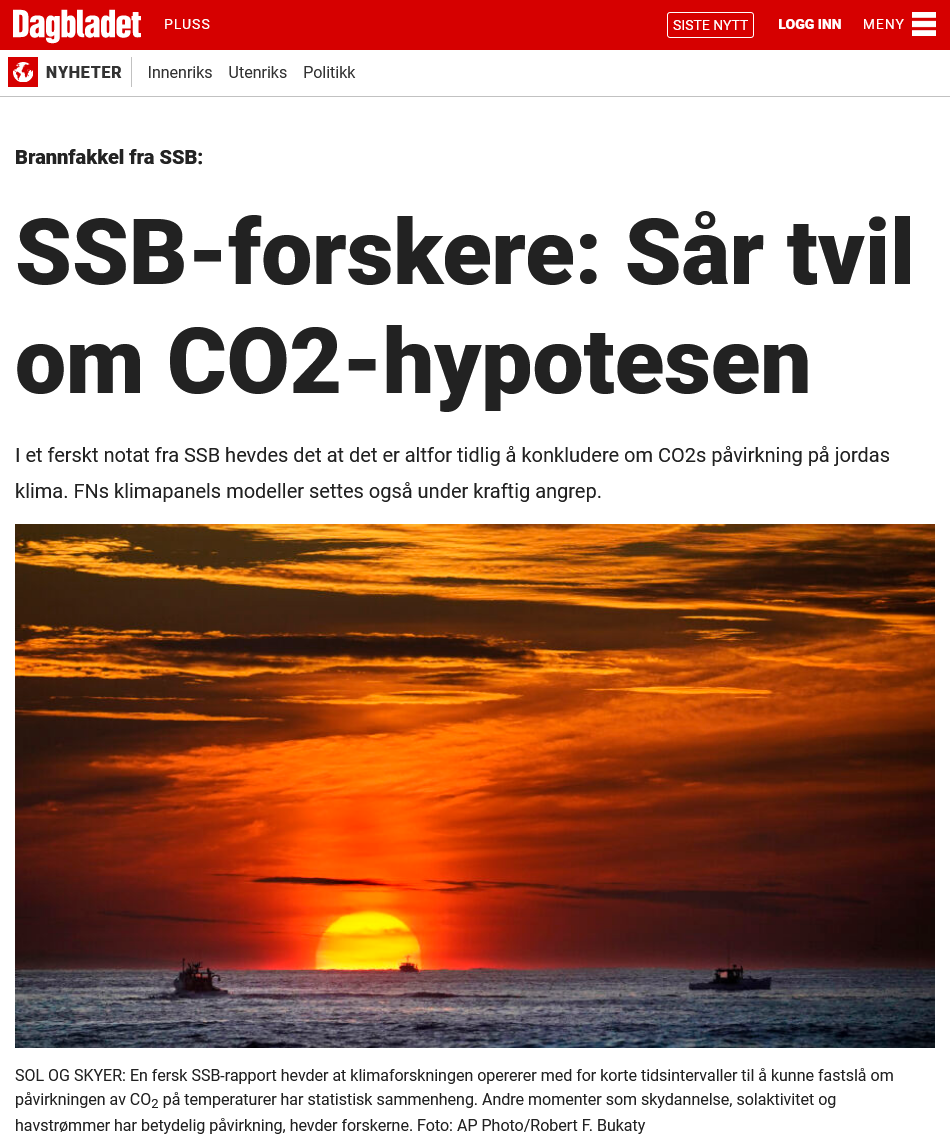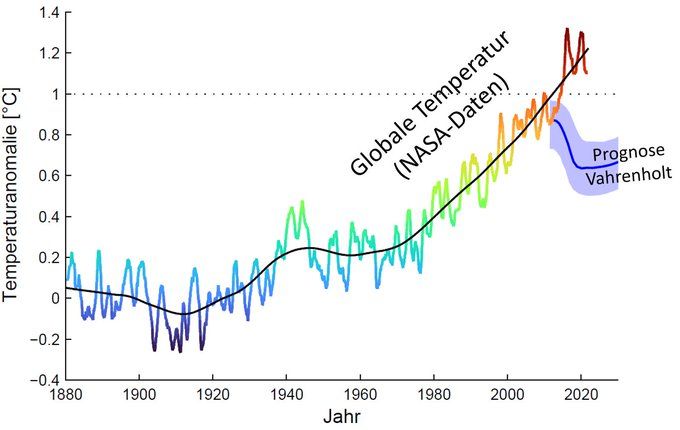Climate denial published by Statistics Norway
A discussion paper released by Statistics Norway contains standard talking-points of climate denial and a crude statistical model of selected temperature measurements which is unable to detect anything. Here I show how these points are flawed and point to sources of facts and scientific findings.

It is very surprising that the agency entrusted with the offical statistics, Statistics Norway, has published the manuscript “To what extent are temperature levels changing due to greenhouse gas emissions?” by Dagsvik and Moen, given the dubious content and character of that work. Statistics Norway says it is normal practice in social science to release preprints of scientific work, but their release gives this manuscript the impemature of peer-reviewed and officially approved information. However, the argument that the agency had no choice but to release work that one of their (retired) scientists was involved in, does not hold. The manuscript does not constitute a research paper but a piece of propaganda. The agency does not publish anybody else's opinion pieces.
It should be easy for Statistics Norway to recognize that it is not a scientific manuscript given the following characteristics:
* Since Isaac Newton’s famous dictum ‘I stand on the shoulder of giants’, it has been a standard scientific practice to review prior work in the same domain before presenting one’s own work. The manuscript does not contain such a review.
Given their question, the authors would otherwise have had to account for the chapter ‘The Human Influence on the Climate System’ of the latest IPCC report, which on 100 pages provides a very thorough treatment of the matter. That assessment is based on the full body of scientific work, and just the list of sources used fills 30 pages.
* Instead of reviewing prior analyses of temperature trends and their connection to greenhouse gas concentrations, Dagsvik and Moen promote several alternative, false theories, as well as assertions and remarks that are irrelevant to the matter at hand.
* The report repeats several points from the book 'the cold sun' by German ex-politician Fritz Vahrenholt, published in 2012, which promoted the theory that the solar cycle determines the climate of the Earth. The book was characterized by a biased presentation of the literature, where several sources were misquoted. Vahrenholt further concluded with certainty that the temperature up to 2020 and beyond would drop. Haven't Dagsvik and Moen realised that the opposite has happened?

* Dagsvik and co-author Moen further cite astrophysicist Henrik Svensmark's theory that cosmic rays through processes in the upper atmosphere affect the climate on Earth. The theory was tested in climate research's most expensive experiment, at CERN about 10 years ago. The experiment showed that the mechanism described by Svensmark was too weak to affect the temperature of the earth's surface. It is surprising that Statistics Norway cites old theories that have been tested and rejected.

* Retired economist Dagsvik asserts that atmospheric physicists do not understand that the weather is chaotic. In fact, atmospheric physicists teach this in their introductory courses. They also understand fundamental fluid dynamics and have developed an approach to solve fluid-dynamic equations for an open system. It is inappropriate for a scientific manuscript to contain disparaging assertions about other, far-removed disciplines and fields of study.
Have temperatures increased?

In the title, Dagsvik and Moen ask, 'How much does the temperature change due to greenhouse gas emissions?' Their statistical model, however, does not use any data on greenhouse gases. After they have asserted, in their review, that multiple factors affect temperatures including natural variations, their model does not take such natural influences into account. It is completely useless to investigate the question they have posed. According to the model, the maximum temperature that can be expected within the normal range on a random July day in Oslo is 51 degrees Celsius! Only when it gets even warmer will the model allow that temperatures are outside the normal range. An instrument that is so insensitive cannot be used to evaluate theories of climate change, because these do not suggest that temperatures should have increased by tens of degrees because of past greenhouse gas emissions.
It should be noted that Dagsvik and Moen could have used their model to investigate the question of whether observed temperatures are inconsistent with the theory that temperatures have increased. This would be closer to answering the question they pose in the title of their manuscript. However, they have not done that.
Like medicine, climate science relies on multiple lines of evidence
When assessing whether the climate is changing due to human influences, the IPCC conducts a much more sophisticated analysis that takes multiple indicators such as temperature records in many locations, elevations, and media, sea level rise, ice melting, and shifts of seasons into account.
Imagine you go to the doctor because you have fever and feel unwell. Given a body temperature of 38 degrees, Dr. Dagsvik would assert that this was in the normal range and send you back to work. A real doctor would instead look at your throat and nose, hear your lungs, maybe send a test of your saliva to the laboratory. She would make a diagnosis based on all these different observations.
I do not understand how Statistics Norway can defend releasing this piece of propaganda in a series of manuscripts that are meant to present early-phase scientific research. Given the unscientific character of the content, they put their own reputation on line.
P.S.: It is somewhat ironic that Dagsvik and Moen criticise the statistical analysis of temperature data through climate researchers and claim that they can do better. Fifteen years ago, physics professor at Berkeley, Richard Muller, did. His Berkeley Earth project received big money from climate skeptics in the U.S. coal industry to disprove the hypothesis that the Earth's temperature has increased. The team improved both the dataset and statistical method. The analysis showed that warming was even stronger than what the Intergovernmental Panel on Climate Change had determined at the time. Berkeley Earth also publishes a guide for climate skeptics, showing the limits of climate science knowledge in a simple manner.

